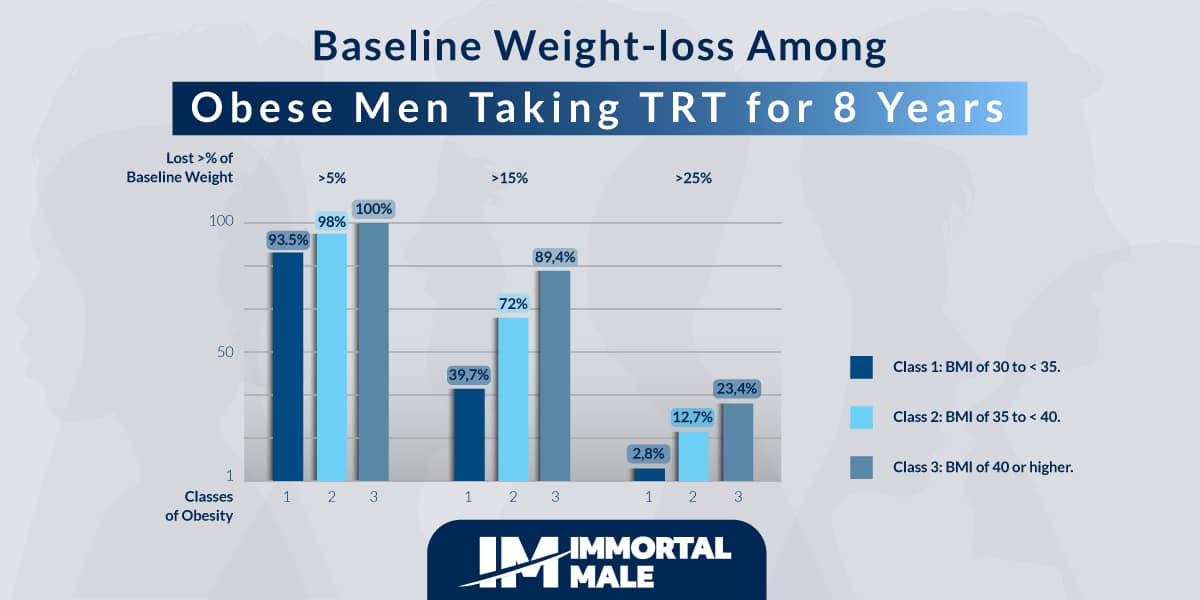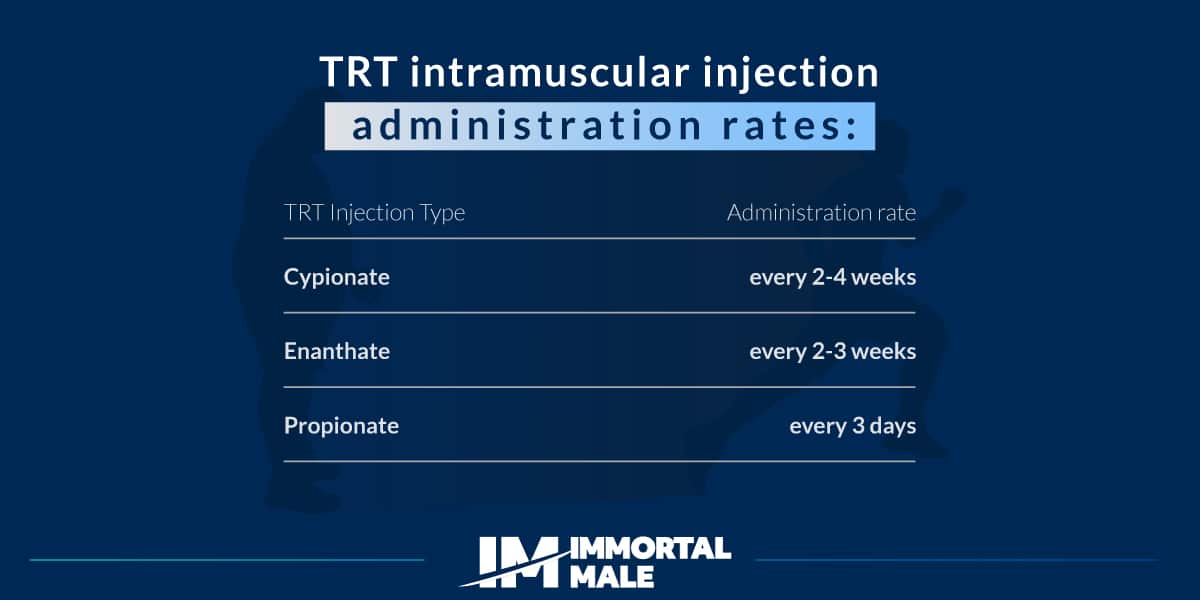Are you wondering how long TRT lasts? Use this guide to find out what the timeline for TRT is, along with potential side effects.
Do you find yourself asking, “how long does TRT last?” Testosterone replacement therapy (TRT) is a treatment option for the symptoms of hypogonadism, or low testosterone, in males. TRT supplies the body with an external source of testosterone so that hypogonadal symptoms are reduced. An estimated 4 to 5 million men are affected by hypogonadism in the United States alone, which indicates that TRT therapy is an important and widely needed treatment.1
If you or a loved one are looking into this treatment but find yourselves asking, “how long does TRT last?” then read on in this article.

So, how long does TRT last? The main goals of TRT are to help patients find relief from the symptoms of low testosterone while also restoring a patient’s testosterone levels to normal.2
Testosterone replacement therapy should be a safe and comfortable process for every patient. The TRT treatment process involves controlled delivery of testosterone to the body as directed by a physician. However, TRT first has to begin with a professional diagnosis of hypogonadism. Hypogonadism is diagnosed in men who have a serum testosterone concentration of less than 300 ng/dL in combination with the symptoms of low testosterone.3
Symptoms of low testosterone experienced by each patient may vary, but common symptoms include:4
Additionally, one of the benefits of TRT muscular injections is that they provide the body with a high concentration of testosterone over an extended slow-release period. Testosterone delivered through injection is prepared with an ester group; it is the addition of the ester that enables slow release of testosterone after injection into the muscle.7
With intramuscular injections, testosterone’s effect on the body is felt for a longer amount of time before re-administration of testosterone is required.
Read on if you are looking to answer the question, “how long does TRT last?”

Before answering the question, “how long does TRT last?” it is important to know who is best suited for TRT. Testosterone replacement therapy is recommended for clinically diagnosed hypogonadal men to restore and maintain secondary sex characteristics and to resolve the symptoms of hypogonadism.11
It is important to discuss TRT with a medical provider prior to initiating treatment to determine if TRT is a good solution for currently held health concerns and to determine if the testosterone replacement therapy cost is appropriate for the desired TRT treatment results. Additionally, discussing the treatment option with a provider ensures that health history can be properly evaluated for a safe and comfortable TRT experience.

A common question is “how long does TRT last?” The length of the TRT process is different for each patient. Testosterone levels in men drop about 2% each year after the age of 40.12
Endogenous, or naturally produced, testosterone levels will continue to decline with or without testosterone replacement therapy. Patients who wish to reduce the symptoms caused by low testosterone will need to continuously provide the body with an external source of testosterone.
So, how long does TRT last? It generally takes anywhere from three to six months of treatment to feel the full benefits of testosterone replacement therapy.13
Throughout the TRT duration, symptoms of hypogonadism should become less prevalent. Patients will instead begin to notice significant differences in their life before and after TRT, including improving symptoms of erectile dysfunction, low libido, and fatigue.
Testosterone replacement therapy starts working immediately, but it will take several weeks to a few months for the first effects to be felt. The TRT timeline covers the effects of testosterone treatment that are felt both in the short-term and long-term.
Wondering how long does TRT last? TRT can last for a number of months and provide a variety of benefits. Achieving the maximum benefits from testosterone therapy requires commitment to the treatment process, but most patients begin to feel some benefits before several months. Here are the month-by-month benefits of TRT and what you can expect to feel as you start treatment.
Patients who adhere to a provider recommended TRT injection schedule can expect to see the following effects of testosterone injections within the first and second months of treatment:
Month three of the TRT timeline yields important health benefits for patients with Type-2 diabetes or who have problems with blood pressure control. Additional effects of testosterone injections at the three-month mark include:
After four to five months of TRT, men can expect that:
The maximum benefits of testosterone therapy will be experienced around month six. These positive side effects include:
Continued TRT therapy will ensure that patients continue to feel the testosterone replacement therapy results experienced during the first six months of the TRT timeline.
Read on to further answer “how long does TRT last?”
How long does TRT last and how quickly do you feel the effects? It takes time to feel the effects of testosterone treatment. Patients can expect to wait between three to four weeks to begin noticing any positive changes as a result of TRT.21
This does mean that TRT is not working in the period between the start of injections and the onset of benefits, but that it needs time for the body to respond to a new source of testosterone.
So, how long does TRT last? Testosterone injections need to be administered every few weeks, but the exact time frame depends upon several factors. In a well-monitored and patient-centric TRT treatment program, the injections will be administered at a dose and interval in which the patient does not feel the declining testosterone levels from the previous injection.
Typically, the TRT cycle length for administration of testosterone injections is one to two weeks.

Looking for more information to answer the question, “how long does TRT last?” Immortal Male offers a comprehensive testosterone replacement therapy treatment program intended to support patient health and well-being. The Immortal Male TRT program starts by connecting interested individuals with an educated and friendly concierge team.
Immortal Male takes a patient-centric approach towards testosterone replacement therapy. TRT is a process that has already helped thousands of men, and you could be the next to reap the rewards of TRT. Contact us to learn more about how long TRT last and what you can do to start treatment.
Immortal Male is an online clinic that helps men optimize their hormones.
As part of your membership and as medically indicated, physicians prescribe medications, and recommend supplements that are delivered to you from the comfort of your home.